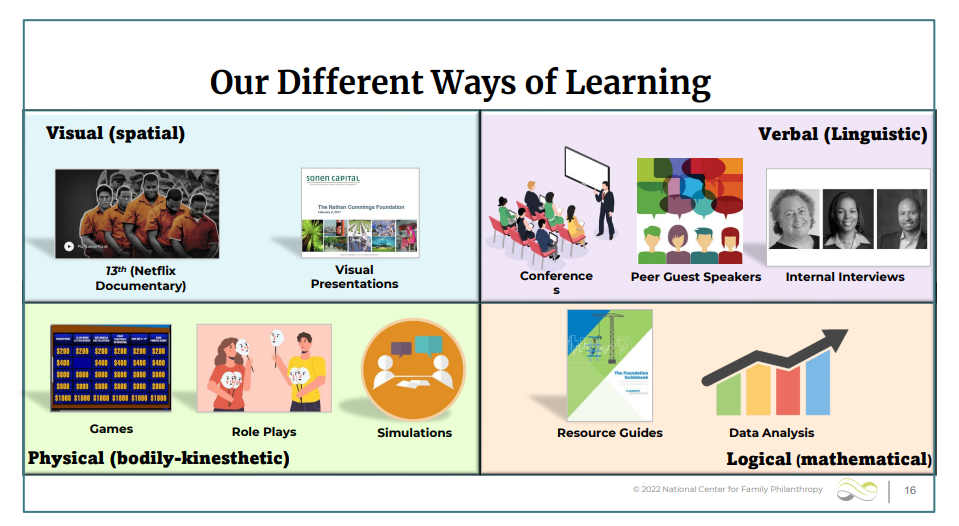Takeaways Blog on Designing Effective Board Meetings: Purpose, Outcomes, Process, and People

Courtesy of Tima Miroshnichenko on Pexels
This blog summarizes key notes from our May Fundamentals of Family Philanthropy webinar.
Effective meetings are critical for engaging family foundation board members. These convenings can provide the opportunity for family members and decision makers to discuss a variety of topics like values, grantmaking strategies, and learning agendas. The most useful and enjoyable board meetings usually consider the purpose, outcomes, process, and people involved. In the National Center for Family Philanthropy’s May 2022 webinar, Jason Belinkie, Bobbi Hapgood, and Holli Rivera discussed how to incorporate those components when developing effective board meetings. Here are important takeaways from the conversation.
When planning a board meeting, think about the purpose for convening first.
The purpose of a board meeting is not necessarily obvious, especially if you have standard quarterly or bimonthly meetings on the schedule. During one meeting you may need to discuss governance policies, and during another you may need to talk about a newly proposed grantmaking focus. It’s important to take a step back and name the purpose in order to be clear and effective.
After determining the purpose, brainstorm potential outcomes for the meeting and the process involved for getting there.
The outcomes of a board meeting should illustrate the vision of what success looks like. For example, an outcome of a board meeting could be coming to an agreement about the direction of a new strategic initiative. Another outcome could be having a shared understanding of a specific funding area. Afterwards, you can think about how much time you’ll need for each subtopic, who will lead specific parts of the discussion, and other steps to achieve the outcomes.
Consider different learning styles and try to incorporate several in the meeting.
Everyone learns and processes information differently. Utilizing more than one learning technique is helpful if you want to capture the full attention of your board. There are visual, aural, physical, logical, and verbal learning styles. Additionally, some people prefer learning in groups while others prefer learning alone. See below for tactical examples of some of these learning styles.

Slide excerpted from “Designing Effective Board Meetings: Purpose, Outcomes, Process, and People” presentation, created by Holli Rivera
Keep these four suggestions from moderator Holli Rivera in mind when planning for effectiveness:
Prioritize: Given your purpose and foundation personality, prioritize what will be most impactful for the group.
Create Space: Think about where there is already agreement and use consent agenda to free up active space.
Be proactive: Knowing the dynamics and culture of the board, you may need to assign pre-work, have one-to-one conversations with board members to elicit initial reactions, talk through a sticky situation or allow them to “get their words out”.
Use Technology: Think about options that can make the work more efficient, or incorporate learning styles.
To learn more, the recording and transcript of “Designing Effective Board Meetings: Purpose, Outcomes, Process, and People” are available exclusively to NCFP Friends of the Family and Partner Subscribers.
Maya Diggs is a program assistant at NCFP
